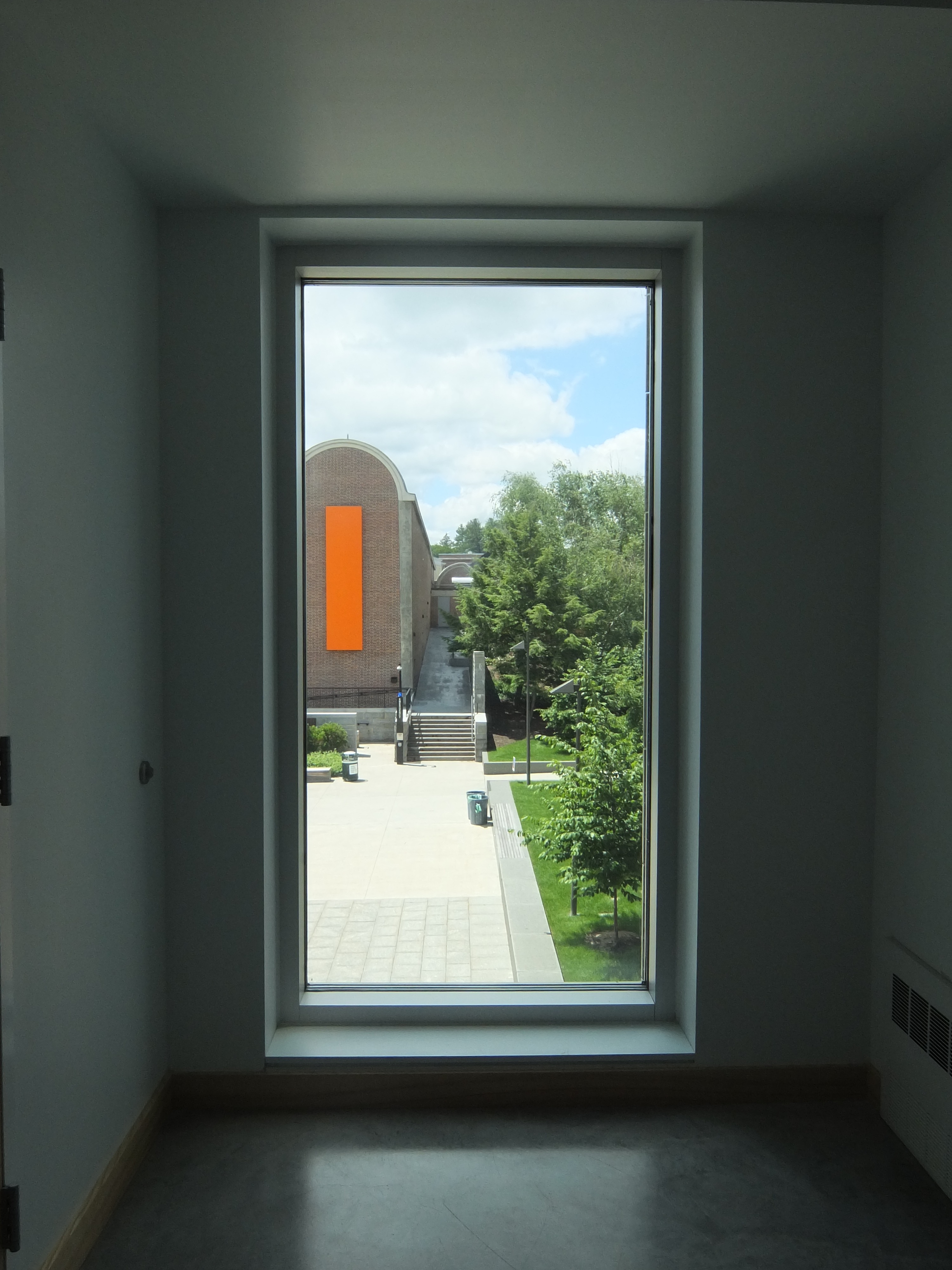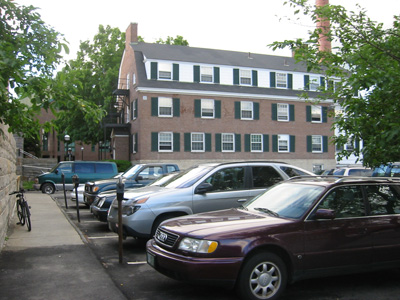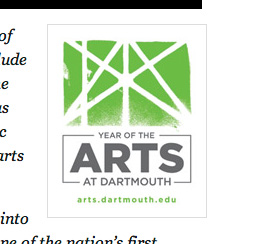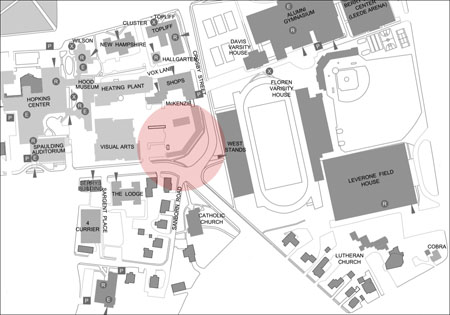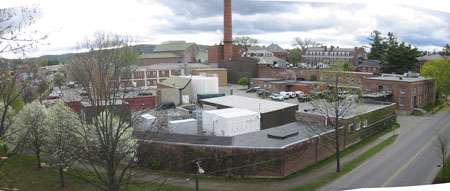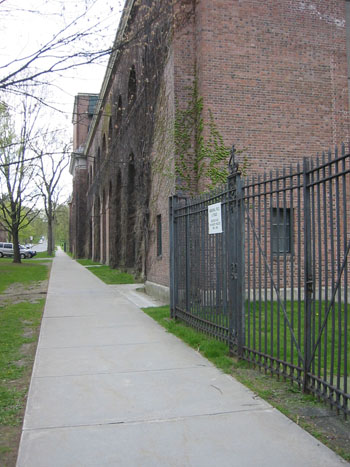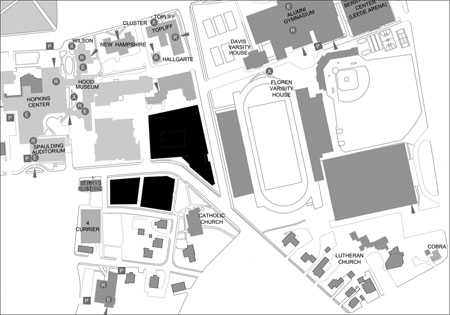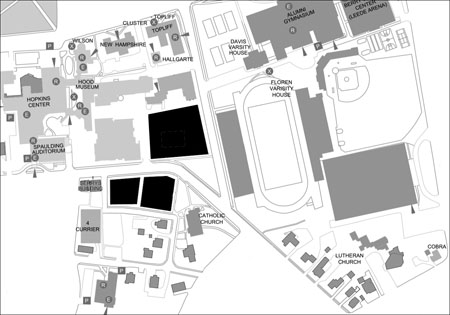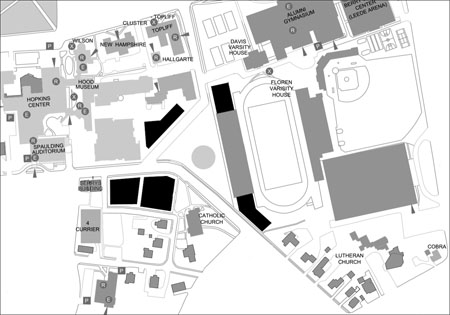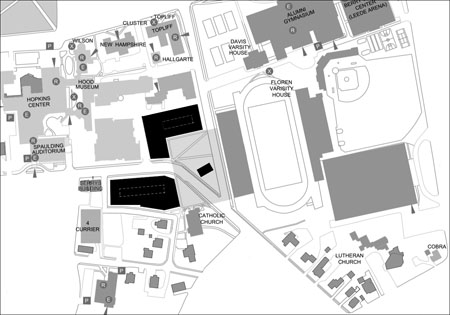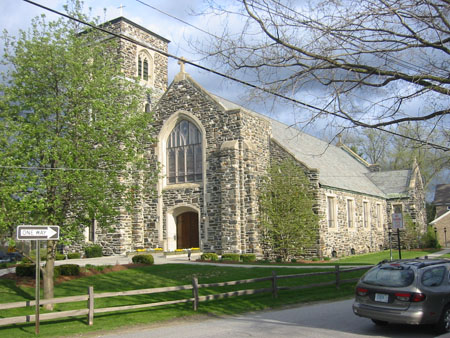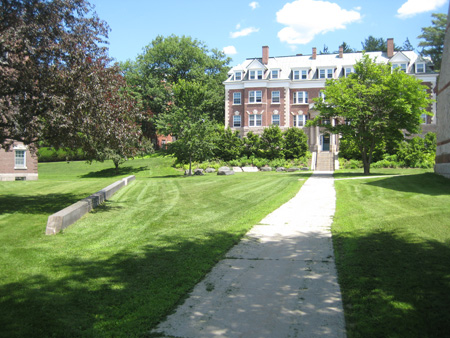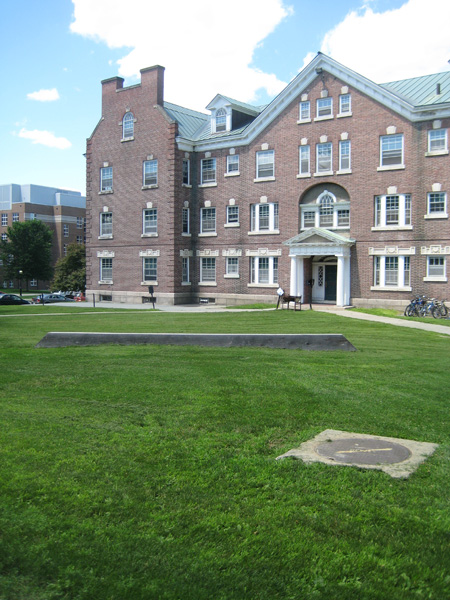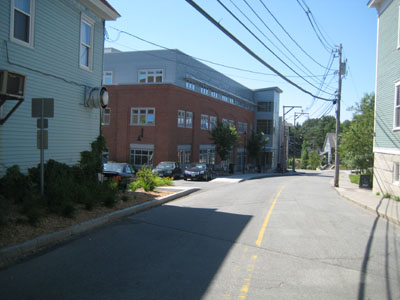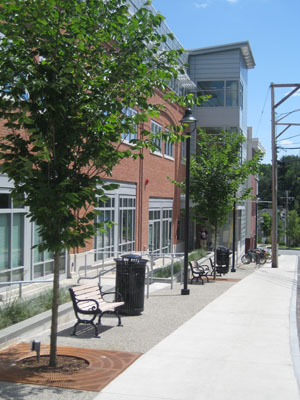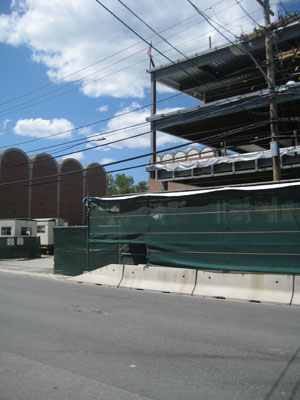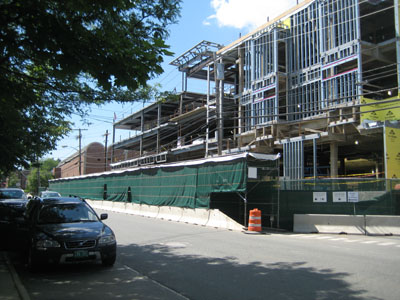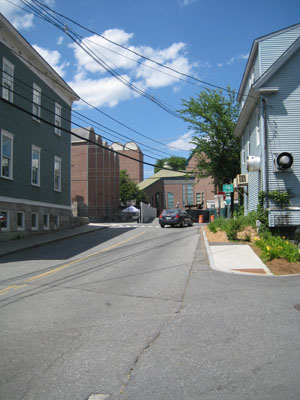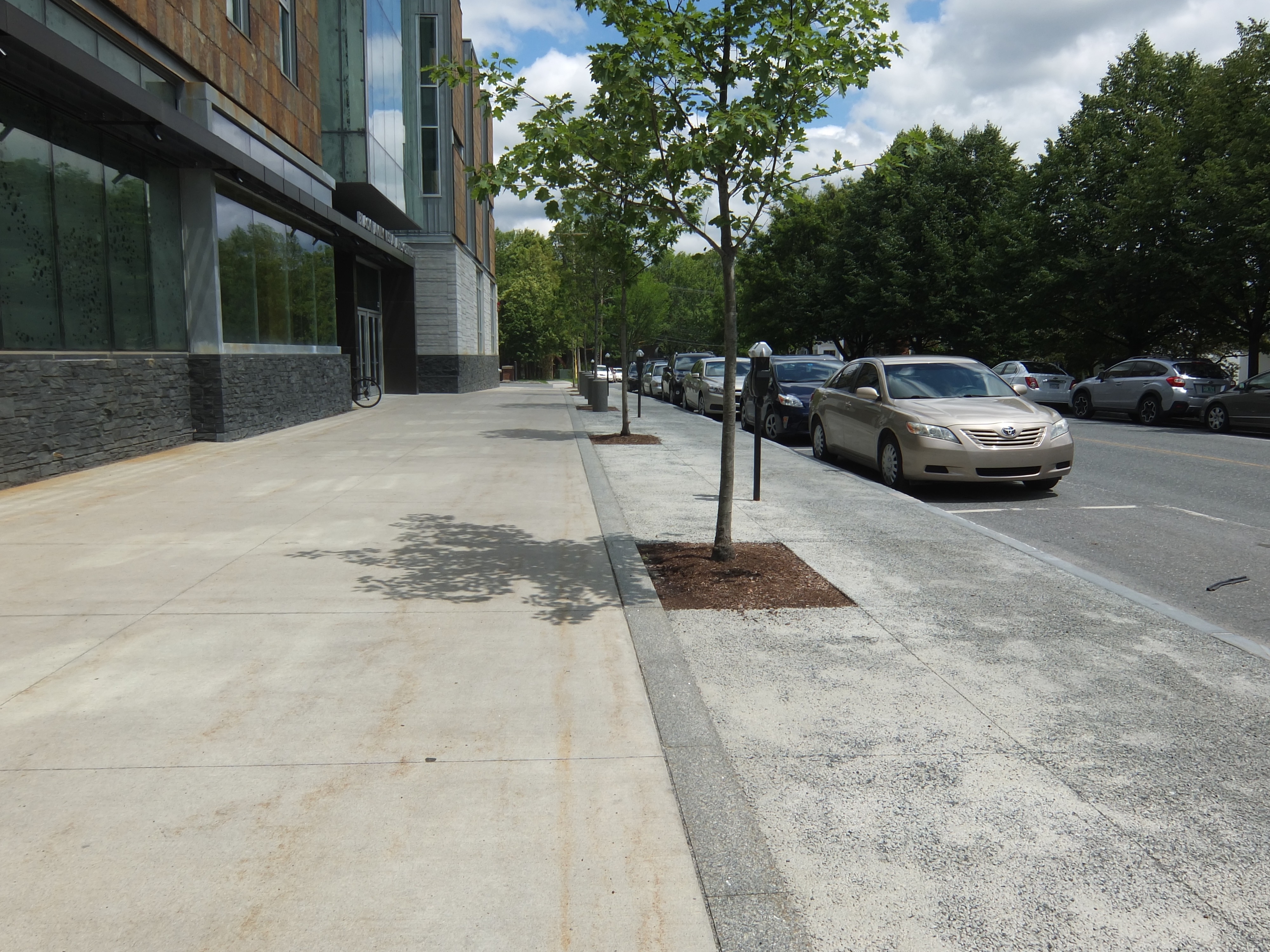
Love the broad sidewalk on the Lebanon Street side. It would be even better with some ground-level shops, but this is a good start.
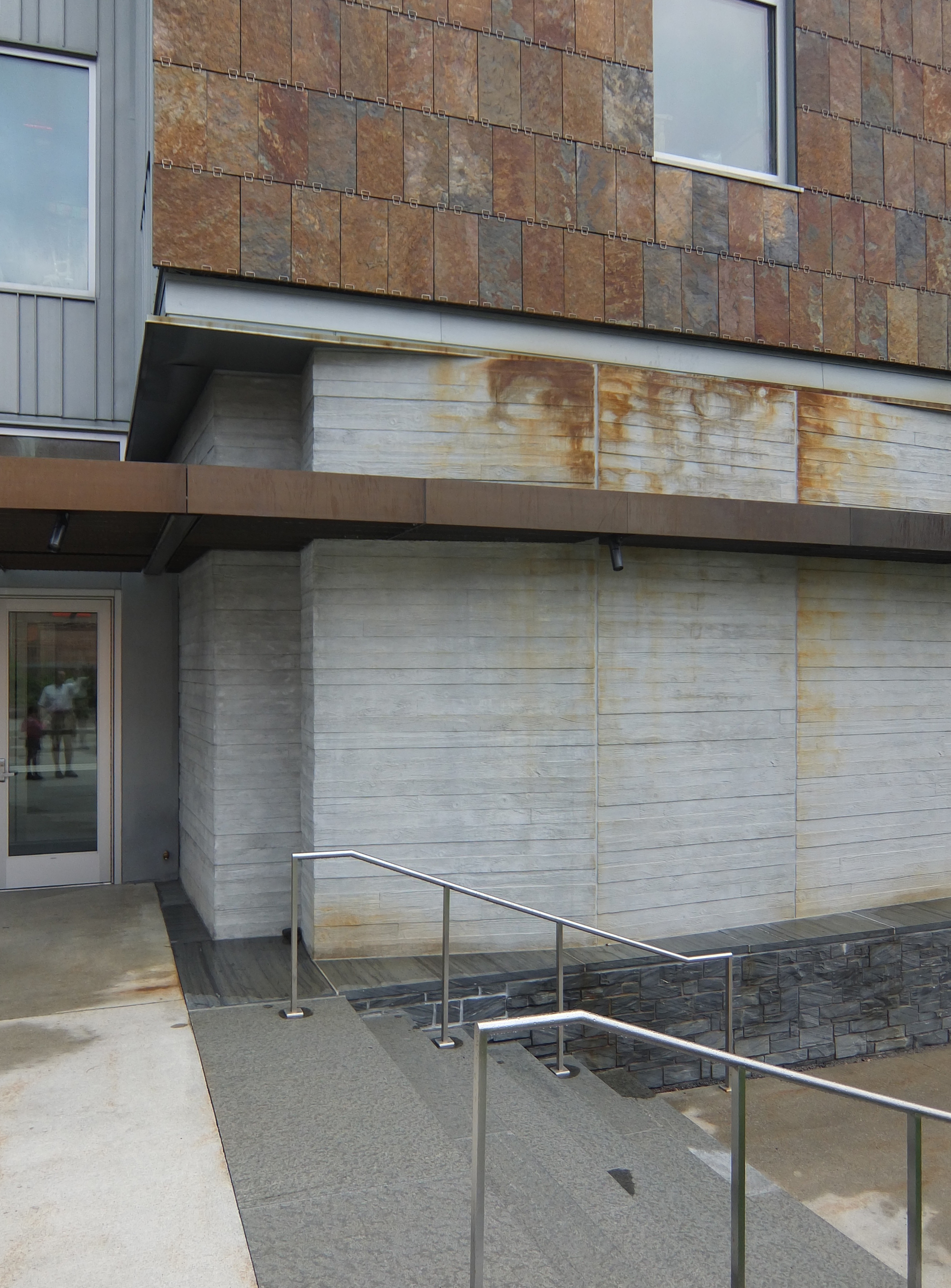
This is the largest of the famous rust stains, and the only one that really detracted from the building’s appearance last summer. The concrete wall obviously shouldn’t have been pulled out far enough to catch the runoff from the Norwegian slate, that’s all. There is no point in trying to keep up with cleaning it as long as the stone still contains iron oxide. Instead the school should (1) install a drip rail to channel the runoff, (2) cast a little Modernist concrete gargoyle for this spot, or (3) embrace the stain and commission an artist to incorporate it into an evolving work of art, perhaps by using stains in other colors.
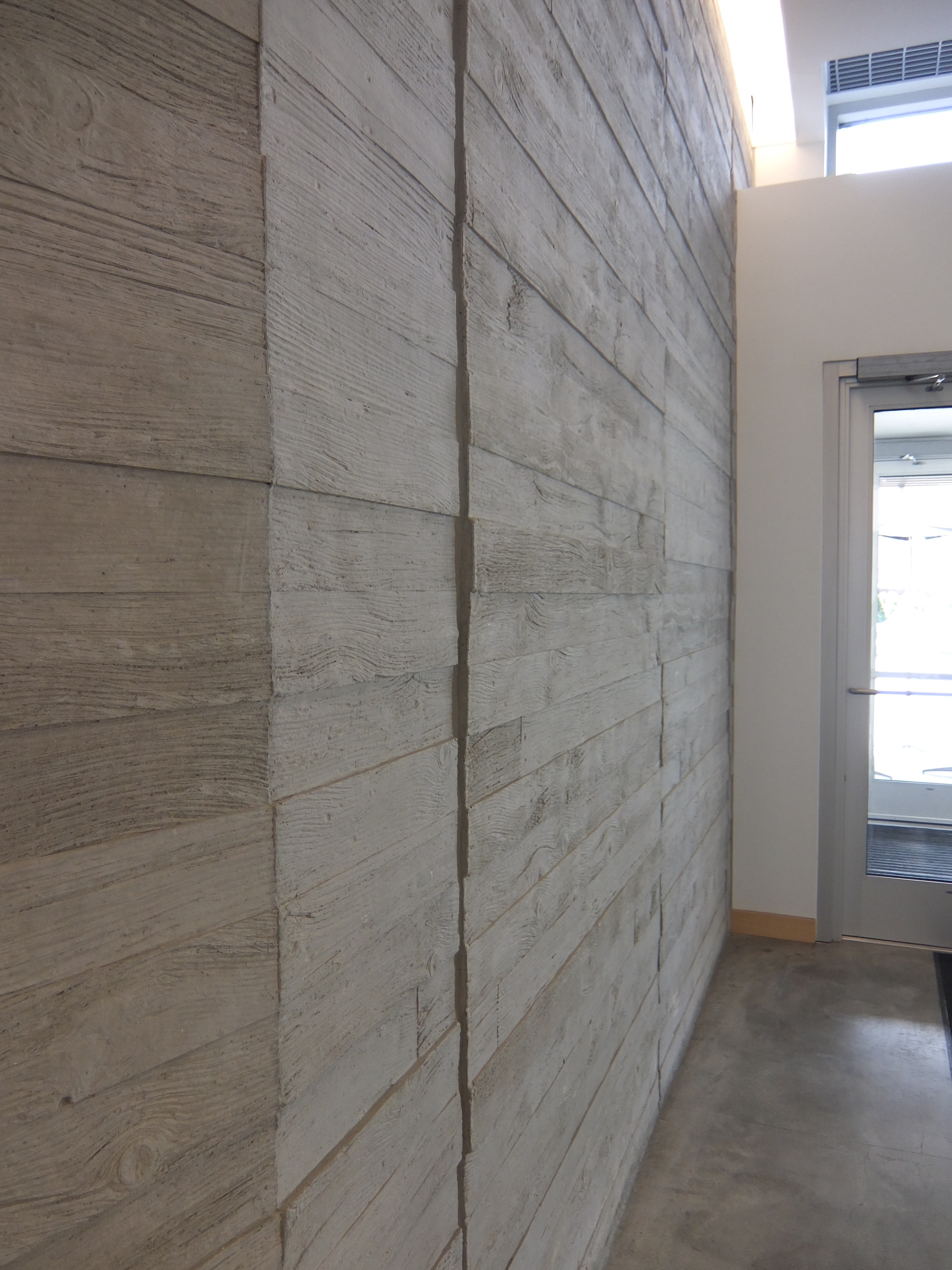
That exterior board-formed concrete wall continues inside the building.
A detailed article from structural engineering firm Lemessurier (pdf) on the construction of the VAC contains these interesting tidbits:
Machado and Silvetti Associates designed a basement in the building that was conveniently situated directly atop the highest ridge of the bedrock spine. Although the basement required leveling of appreciable regions of bedrock, this geometry of the building allowed for a stable, flat bearing surface in the central portion of the structure.
To increase the overall efficiency of the foundation placement, the contractor suggested that larger pits be dug by hand while some shafts continued to be slowly drilled elsewhere on-site. The proposed hand digging involved timber lagging to support the excavation. A single worker shoveled soil into a bucket by hand, and the bucket was then lifted from the pit base to the surface. Ironically, a simple technique used to excavate mine shafts in Thoreau’s era would become critical to the success of a state-ofthe-art 21st-century construction project. So atypical was this type of construction that the workers and engineers present at the site came to refer to the work as 1850s foundations.
The curved wood panel ceiling is the only surface in the building not rectilinear in its expression. The art forum is otherwise bound by straight lines that are vertical, horizontal, and even diagonal as the grand staircase descends from the upper levels. The columns, however, are set away from the main forum to allow an unimpeded view of the central space as the visitor walks the hallways between offices and studios. The absence of columns in the immediate vicinity necessitates serially cantilevering floor framing—in other words, cantilevers off cantilevers off cantilevers—extending into the forum space and supporting loads by means other than direct column support.
